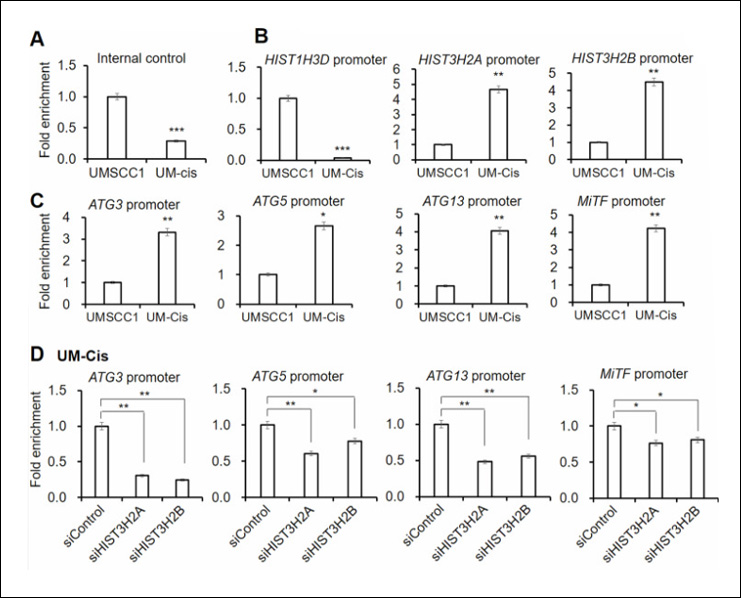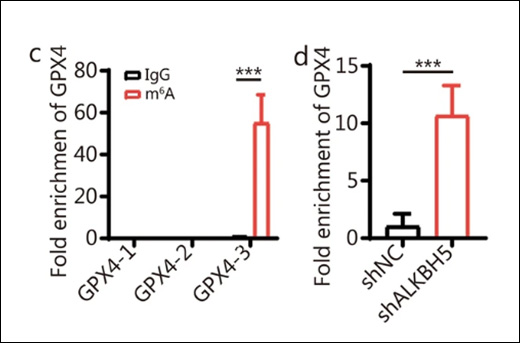It would be a near impossible feat for the human genome, consisting of some 3 billion bases, to fit within its relatively miniscule cellular accommodations if not for the help of a family of very critical DNA-interacting proteins. Histones are the primary protein constituent of chromatin, forming complexes with DNA to compact our rather expansive genetic material for efficient nuclear organization. But make no mistake, these protein “spools” are not merely packaging units for DNA to coil around.
Histones support a slew of biological tasks, such as mitosis, DNA damage repair, cell differentiation, and X chromosome inactivation, just to name a few. Perhaps the most intriguing role histones play is in the regulation of gene expression. Histones have a considerable impact on chromatin structure, affecting the level of DNA compactness and, consequently, accessibility to the cell’s transcription machinery. This modulation of chromosome architecture is facilitated by diverse epigenetic changes to histones that influence their interaction with DNA and other nuclear proteins.

Methylation, acetylation, ubiquitination, sumoylation, citrullination, and phosphorylation are among the more studied post-translation modifications (PTMs) of histones, although the list includes other less prominent marks like malonylation, propionylation, butyrylation, crotonylation, and lactylation. Collectively, this eclectic assortment of chemistries constitutes a so-called “histone code” that manages the activation and silencing of transcription by differentially altering the chromatin state. Histone acetylation (e.g., H3K9ac, H3K14ac, H3K27ac), for instance, has been linked to an open chromatin configuration and active gene expression. The methylated histone marks H3K4me1, H3K4me2, H3K4me3, H3K36me3, and H3K79me2 have been identified as transcription activators, while tri-methylated H3K9 and H3K27 are known to play repressive roles.
 Dr. Manel Esteller, Director of the Josep Carreras Leukaemia Research Institute in Barcelona
Dr. Manel Esteller, Director of the Josep Carreras Leukaemia Research Institute in BarcelonaAs Dr. Manel Esteller, Director of the Josep Carreras Leukaemia Research Institute in Barcelona, points out, “All human diseases show a combination of genetic and epigenetic defects, understood the last one as those affecting the chemical marks that regulate gene activity. Among these, alterations of the histone modification patterns exert a major role. It is probably in the context of cancer where we know the most because we have discovered the presence of mutation in histone modifiers, and epigenetic drugs such as histone deacetylase inhibitors have reached clinical approval.”
“Epigenetics drugs are already used in therapy, especially in cancer,”confirms Dr. Simone Sidoli, Assistant Professor in the Department of Biochemistry and Scientific Director of the Proteomics Core at the Albert Einstein College of Medicine. Indeed, cancer has taken center stage in the research and development of histone PTM-targeting treatments, given the astoundingly vast number of cancer types connected with histone PTM dysfunction: glioblastoma, lung cancer, hepatocellular carcinoma, gastric cancer, pancreatic cancer, colorectal cancer, breast cancer, ovarian cancer, osteosarcoma, acute myeloid leukemia.

Dr. Simone Sidoli, Assistant Professor in the Department of Biochemistry and Scientific Director of the Proteomics Core at the Albert Einstein College of Medicine
Histone modifiers like histone deacetylases (HDACs) and histone methyltransferases (HMTs) are frequently overexpressed or mutated in certain cancer types, leading to global alterations in histone PTM patterns that can cause the aberrant repression of tumor suppressor genes and other genes involved in controlling cell growth and differentiation. “Two histone marks are so far the most actionable: acetylation and methylation,”states Dr. Esteller. “For them, we have a profound understanding of the proteins that function as writers, erasers, and readers of these chromatin signals. Histone deacetylase inhibitors are the most developed compounds in this area.”
Modifications of histones can be context-dependent and cell-type-specific. “There are particular cells and tissues that depend more on one histone modification and its associated enzyme that another,”Dr. Esteller asserts. This can pose challenges to targeting specific cell types or tissues in therapeutic interventions. “Here, we can try to design specific molecules against these dependencies,”as exemplified by Dr. Esteller’s work demonstrating the sensitivity of B-cell lymphomas to HDAC6 inhibition. “On the other hand, a particular defect in a histone modifier can be the ‘weakest link’ to combat that cancer type. Another example that we found is that the deletion of the acetyltransferase KAT6B in small cell lung cancer predicts sensitivity to the chemotherapy drug irinotecan.”
While inhibiting or modulating the activity of HDACs and other histone modifying enzymes appears the central focus of ongoing preclinical and clinical studies, drugs that disrupt reader proteins and other components of the histone modification process are also in contention. Dr. Sidoli reveals an unconventional yet highly plausible "intervention that directly involves histone modifications; substituting histone acetylation with other acyl marks.”
As Dr. Sidoli further details, “The abundance of acetylation vs crotonylation, malonylation, etc., derives from the large amount of acetyl-CoA vs the other respective CoAs.”Acetyl-CoA, of course, serves as the acetyl group donor in the enzymatic reaction catalyzed by histone acetyltransferases. “A potential excess of acyl-CoAs in the cell could contribute to reduce the levels of acetylation, as they occupy the same sites, and potentially reduce transcriptional activity overall. I think it is a fascinating direction in science for, e.g., reduce spurious transcription during aging.”
Nevertheless, HDAC inhibitors currently comprise the bulk of the epigenetic drug market, as seen with the likes of Novartis’s Farydak (panobinostat) for multiple myeloma, Celgene’s Istodax (romidepsin) and Merck’s Zolinza (vorinostat) for cutaneous T-cell lymphoma, and TopoTarget’s Beleodaq (belinostat) for peripheral T-cell lymphoma. “For histone methylation, the advantage that we have is that several cancers, such as subtypes of leukemias, lymphomas, and sarcomas, carry translocations of histone methyltransferases and demethylases, thus, providing candidate targets and patients for compounds targeting this modification,”according to Dr. Esteller. Epizyme’s Tazverik (tazemetostat) for epithelioid sarcoma and Daiichi Sankyo’s Ezharmia (valemetostat) for adult T-cell leukemia/lymphoma, both of which selectively inhibit the histone methyltransferase enzyme EZH2, are marketed HMT inhibitors of note.
The clinical indications of these drugs are primarily limited to hematological cancers, while the R&D of treatments for solid tumors is somewhat lacking. “The main challenge,”Dr. Esteller argues,“would be to translate these successful stories to other more tumor types with a lot of DNA and/or chromosomal damage such as lung, colon, or breast. In these cases, the right selection of the patient according to the multiomics configuration could be crucial.”
Achieving specificity, avoiding off-target issues and side effects, emergence of resistance mechanisms to targeted therapies, and understanding the complexities of histone PTMs in different cancer contexts also present major setbacks for these drugs. “Their potency is limited,”says Dr. Sidoli,“because they cannot be used at high concentrations and for a long period of time. In fact, in most clinical trials, they are used in combination with other methods, e.g., immunotherapy, transplant, or chemotherapy. The problem is related to their low specificity for cancer cells.”
This combinatorial strategy utilizes HDAC or HMT inhibitors in conjunction with other cancer therapies to exploit synergistic effects and overcome drug resistance, offering new avenues for improved cancer treatment. Chidamide, for example, an oral selective HDAC inhibitor approved in China, has shown improved efficacy in patients with peripheral T-cell lymphoma when combined with chemotherapy.
“The key would be to identify unique histone modifications in disease that can be targeted with high specificity,”Dr. Sidoli continues. “To the best of my knowledge, there are none. Although, I am optimistic that the enhanced sensitivity of mass spectrometry will help reveal low abundance ‘exclusive’ modifications in dysfunctional cells.”At present, Dr. Sidoli’s lab is completing a project involving the quantification of nearly 100 different histone PTMs via single-cell mass spectrometry, which may aid in addressing the issue of predicting patient responses to histone PTM-targeting therapies and personalizing treatment.
Considering the heterogeneity of cancer and other diseases, single-cell approaches such as the one employed by Dr. Sidoli’s lab can provide valuable information on the variations of cells within a single tumor in terms of their genetic makeup, gene expression patterns, cell morphology, behavior, and response to treatments. This info would undoubtedly facilitate advancements in personalized medicine, where treatments are tailored to the unique genetic and molecular characteristics of a patient's tumor, with the aim of improving the effectiveness of treatments and reducing the likelihood of treatment resistance. “The key is to identify which histone modifications are most variable within cell populations, as this can be used to predict drug efficacy. We speculate that the most stable histone modifications will prove to be better targets, as cells are more likely to respond uniformly in presence of an inhibitor.”
Dr. Esteller shares a similar sentiment. “The problem of cancer heterogeneity related to the global efficacy of the treatment and the irruption of resistant clones affect all tumor therapies, not only epigenetic drugs. One way to study this in detail is the use of single-cell technologies for histone modifications, to identify sensitive and refractory cells, that eventually will also be analyzed at the granulated spatial level in a pathology section. An interesting manner to overcome drug resistance associated to cellular heterogeneity is the combination of inhibitors of histone modifications with drugs directed to a completely different target of the cancer cell (i.e., a tyrosine kinase inhibitor). The tumor might not have the capacity to adapt to this combined dual attack so easily.”
As these treatments are further studied and refined, they hold great potential for providing more effective and personalized therapeutic options for cancer patients in the future.




 Cart (0)
Cart (0)













